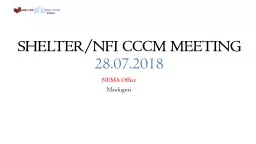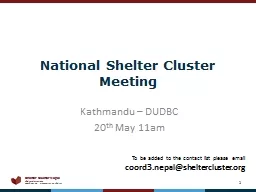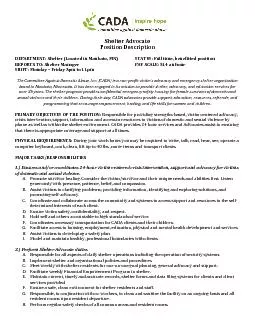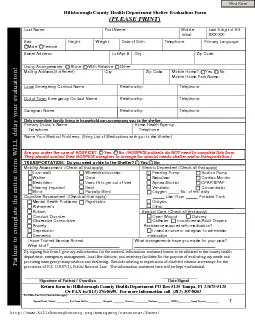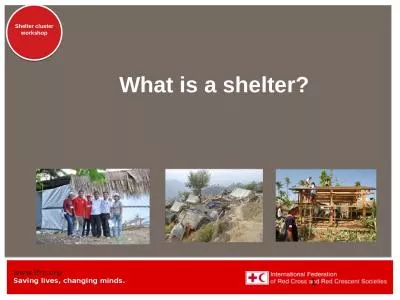PPT-Shaping your Shelter
Author : karlyn-bohler | Published Date : 2017-08-22
Goal To support humanitarian shelter teams to motivate volunteers and communities to acquire more knowledge about safe construction and about improving the structural
Presentation Embed Code
Download Presentation
Download Presentation The PPT/PDF document "Shaping your Shelter" is the property of its rightful owner. Permission is granted to download and print the materials on this website for personal, non-commercial use only, and to display it on your personal computer provided you do not modify the materials and that you retain all copyright notices contained in the materials. By downloading content from our website, you accept the terms of this agreement.
Shaping your Shelter: Transcript
Download Rules Of Document
"Shaping your Shelter"The content belongs to its owner. You may download and print it for personal use, without modification, and keep all copyright notices. By downloading, you agree to these terms.
Related Documents









